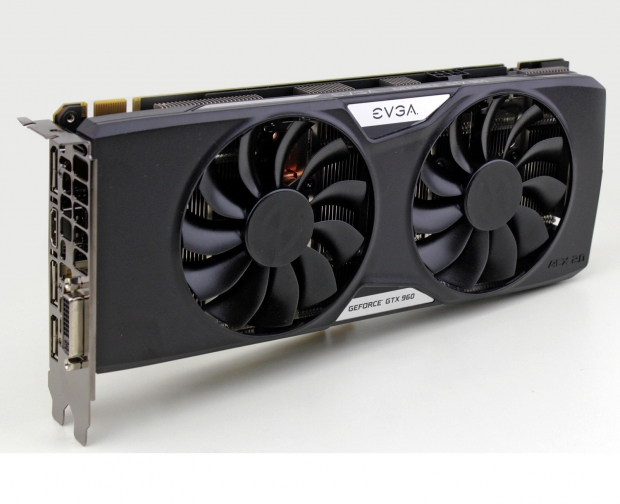Index
EVGA decided to add a bit of value to the GTX 960 with a custom design and generous factory overclock.
It is important to note that EVGA sells several custom designed GTX 960 cards, with different coolers. The new Active Cooling Xtreme (ACX) 2.0+ cooler on the GTX 960 SuperSC card which we tested has a somewhat different heatsink design compared to the GTX 960 Superclocked. SuperSC comes with a higher factory overclock and therefore requires better cooling. The GTX 960 SuperSC looks a lot like the GTX 970 Supersuperclocked (EVGA recently renamed Supersuperclocked to SuperSC), but EVGA redesigned the heatpipe system for the GTX 960 SuperSC.
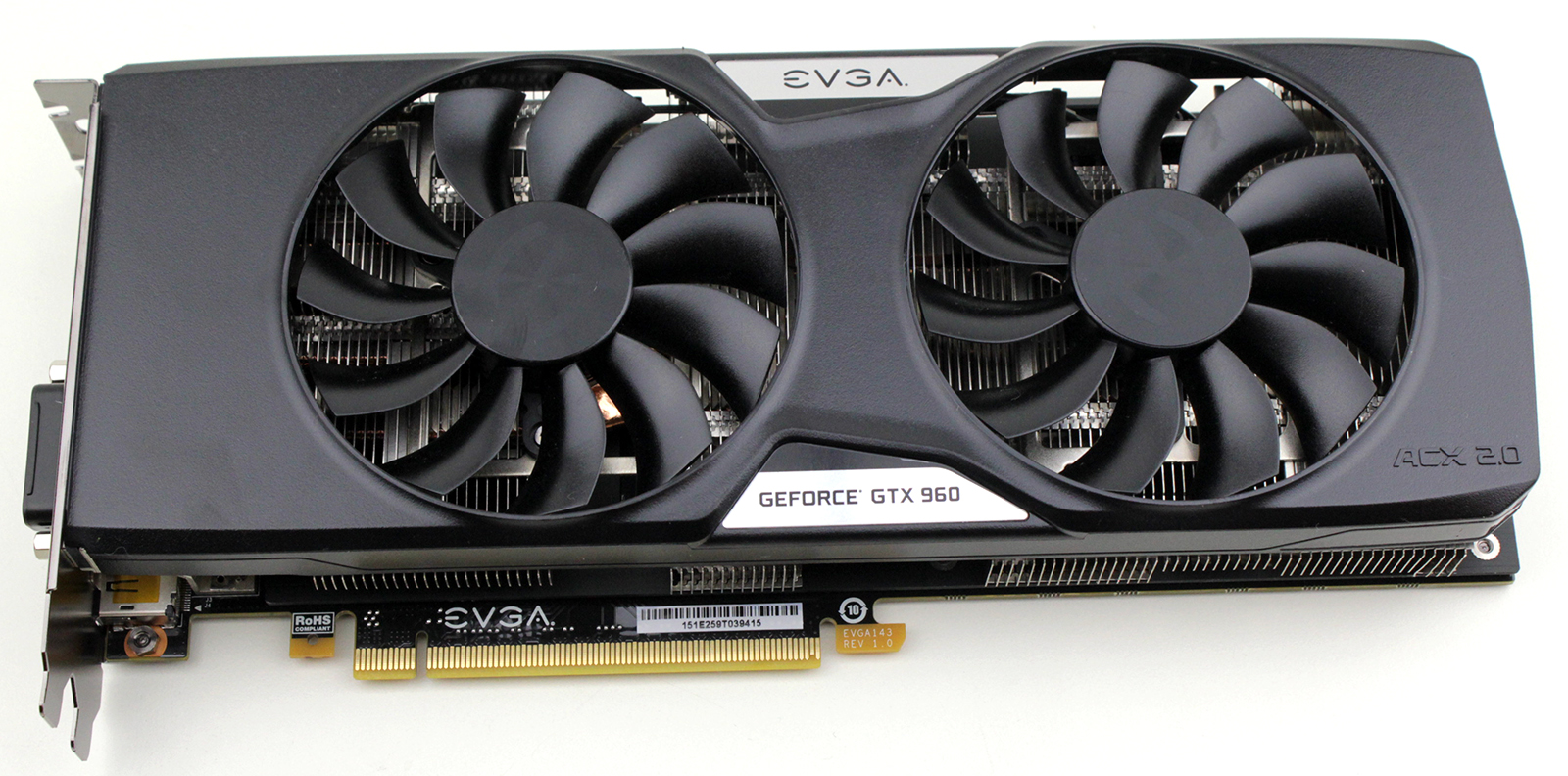 The new shroud looks quite good, but it is plastic just like the old one.
The new shroud looks quite good, but it is plastic just like the old one. 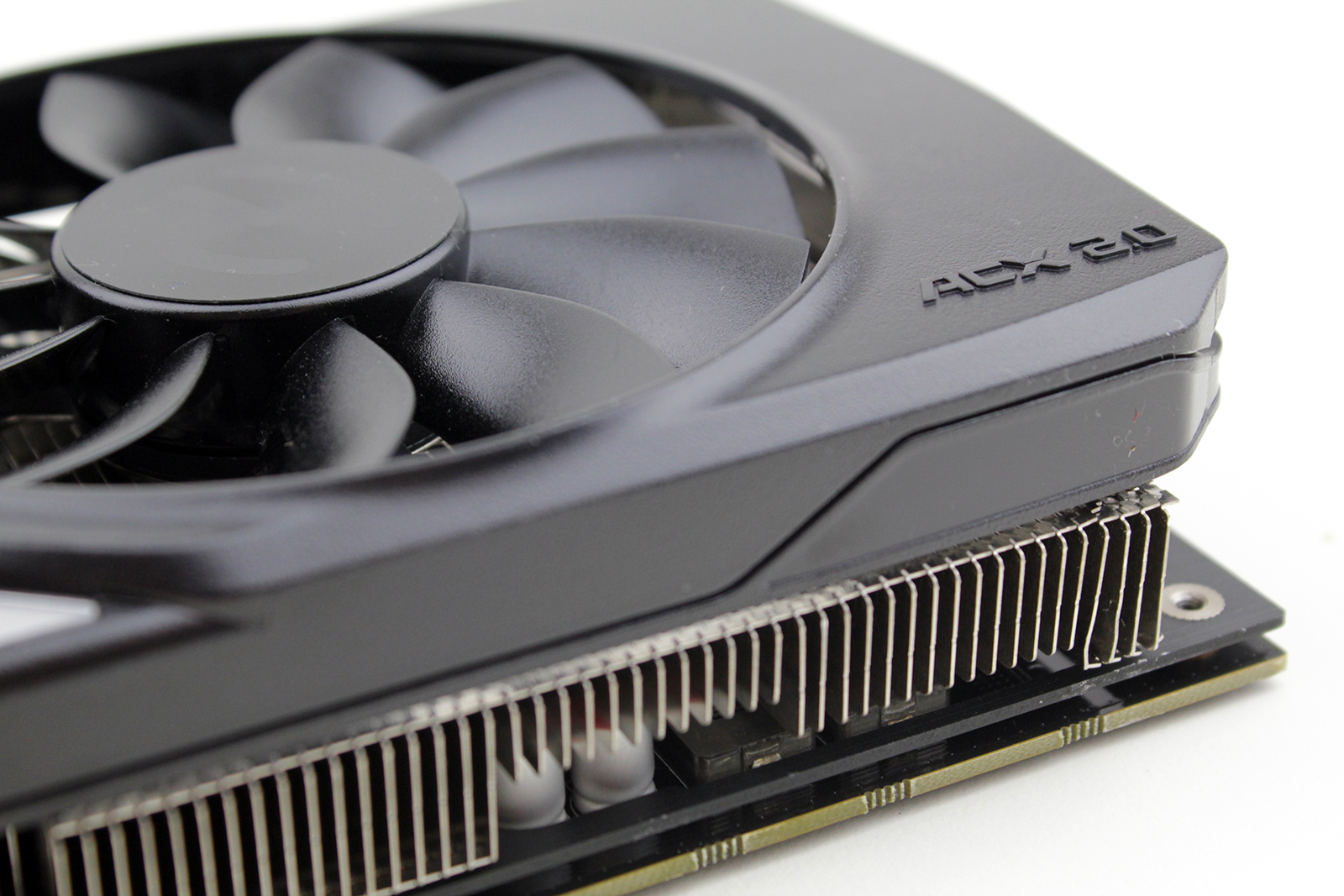
The GTX 960 SuperSC ACX 2.0+ is 25.6cm long and 11.1cm tall. Obviously it is a dual-slot design, but it is somewhat smaller than its high-end predecessors. The ACX cooler on the GTX 780 Superclocked ACX was 27cm long.
The GeForce GTX 960 reference board measures 9.5in or 22cm in length. 
With the ACX/ACX 2.0, EVGA designed a special heatsink with a lot of dissipation surfaces. To maximize dissipation volume, EVGA used a few tricks, such as tall fins at the sides of the cooler. The heatsink was designed in such a way to minimize airflow turbulence between the fans, with clever barriers directing the airflow. Also the GTX 960 SuperSC’s PCB is elongated to match the full length of the ACX 2.0+ heatsink.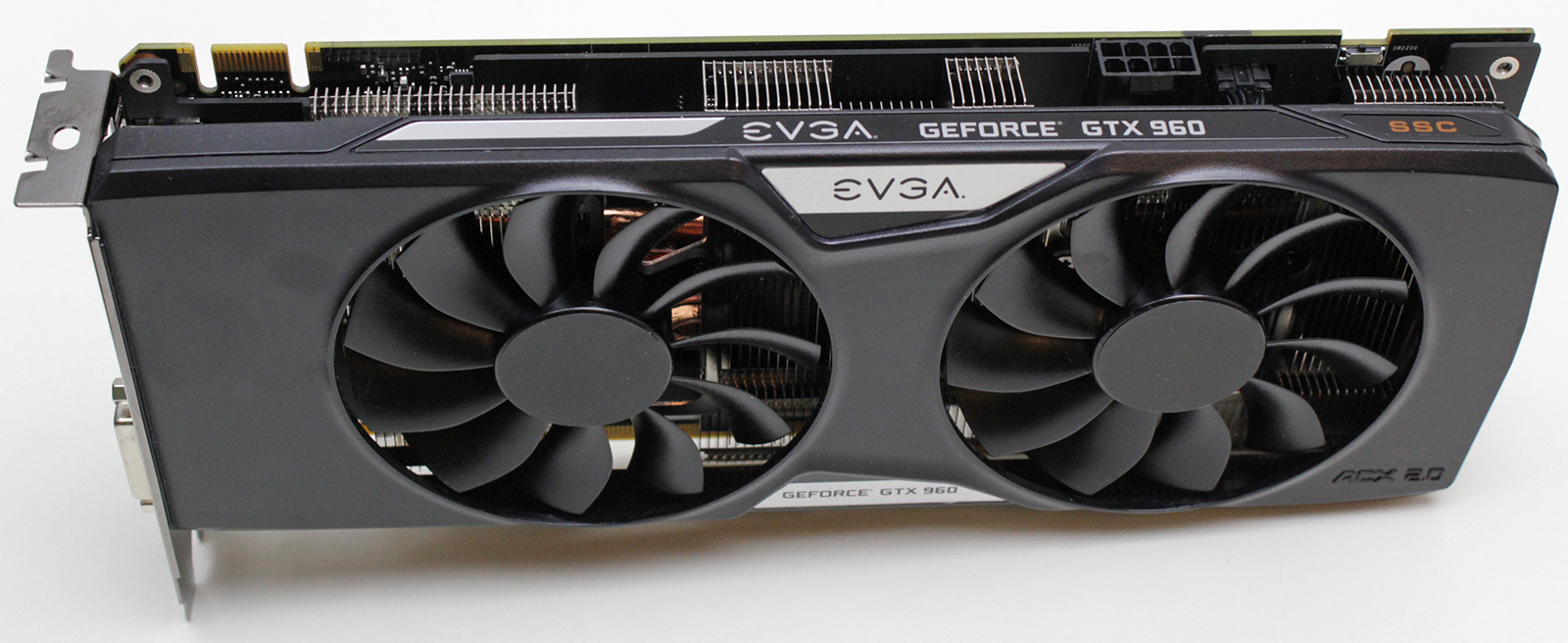
A 6+6 pin power connector setup is used on the GTX 980 and GTX 970, but the reference GTX 960 requires only one 6-pin power connector. EVGA provides more juice to the GTX 960 SuperSC by using one 8-pin power connector and a 6+2 power phase design. The GTX 780, GTX 780 Ti and Titan have a TDP of 250W, compared to the GTX 980 with a 165W TDP, GTX 970 with a 145W TDP and GTX 960 with 120W.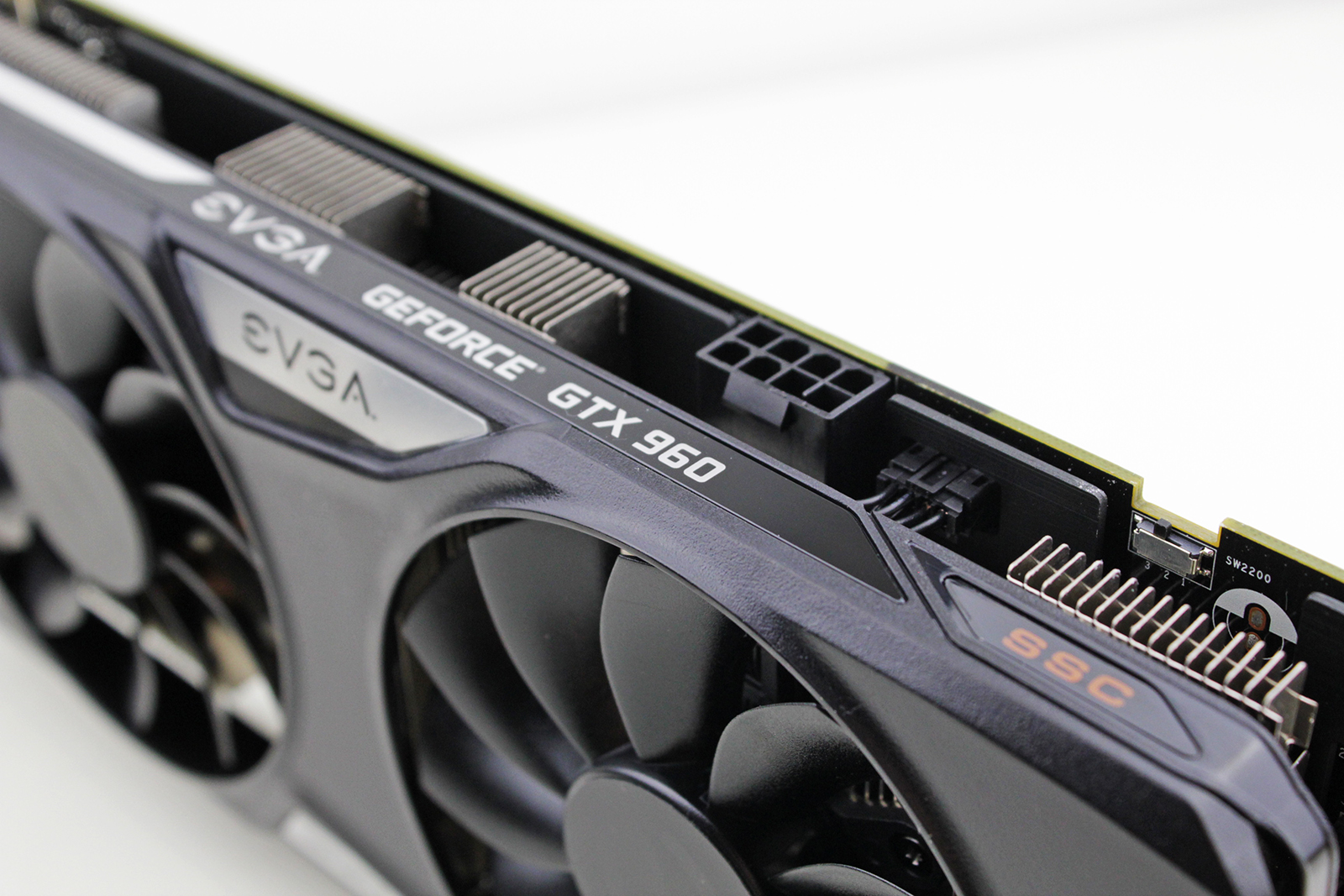
This card is meant for overclocking and QSD (Quick Switch Dual BIOS) allows you to switch to the secondary BIOS with the flick of a switch. The BIOS switch is located close to the PCI power connector.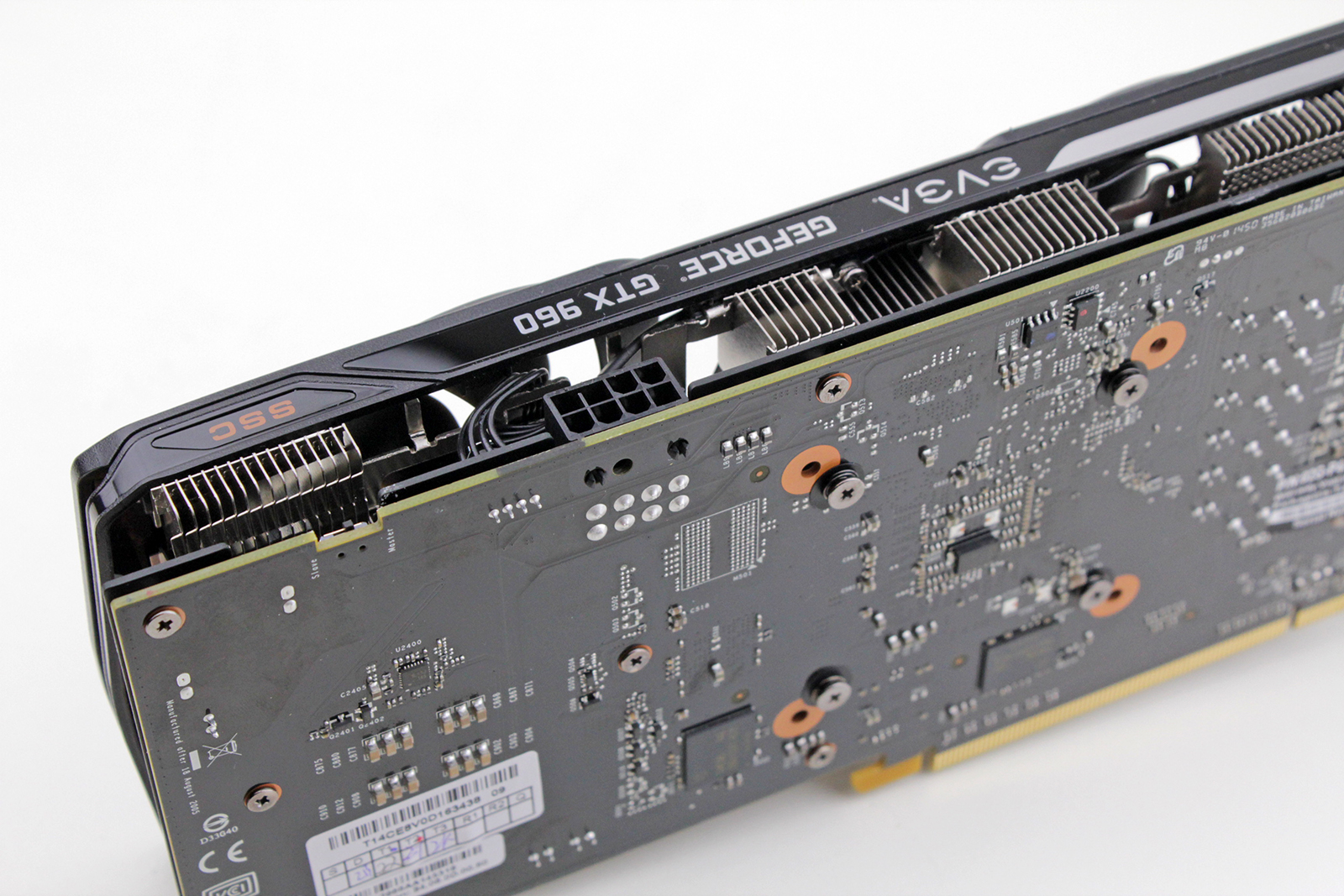
The new fans are said to be more efficient thanks to a new motor. They can hit higher speeds, while the fan blades are designed to deliver more airflow at lower revolutions. Poor fans are often the weakest link in cooler design and EVGA is fully aware of this fact. That is why the company put a lot of effort into tweaking its fans.
The first ACX cooler (used on the GTX 780 Superclocked) has 9-blades, but now EVGA uses an 11-blade fan design. The blades are swept and the fan uses a double ball bearing design. The noise generated by ball bearing designs tends to be very low, at least while they are new. However, since this fan uses two ball bearings it should last a bit longer and generate a less noise even after a couple of years of wear. EVGA’s GTX 960 SuperSC ACX 2.0+ fan turns off below 60C, generating 0dB of noise.
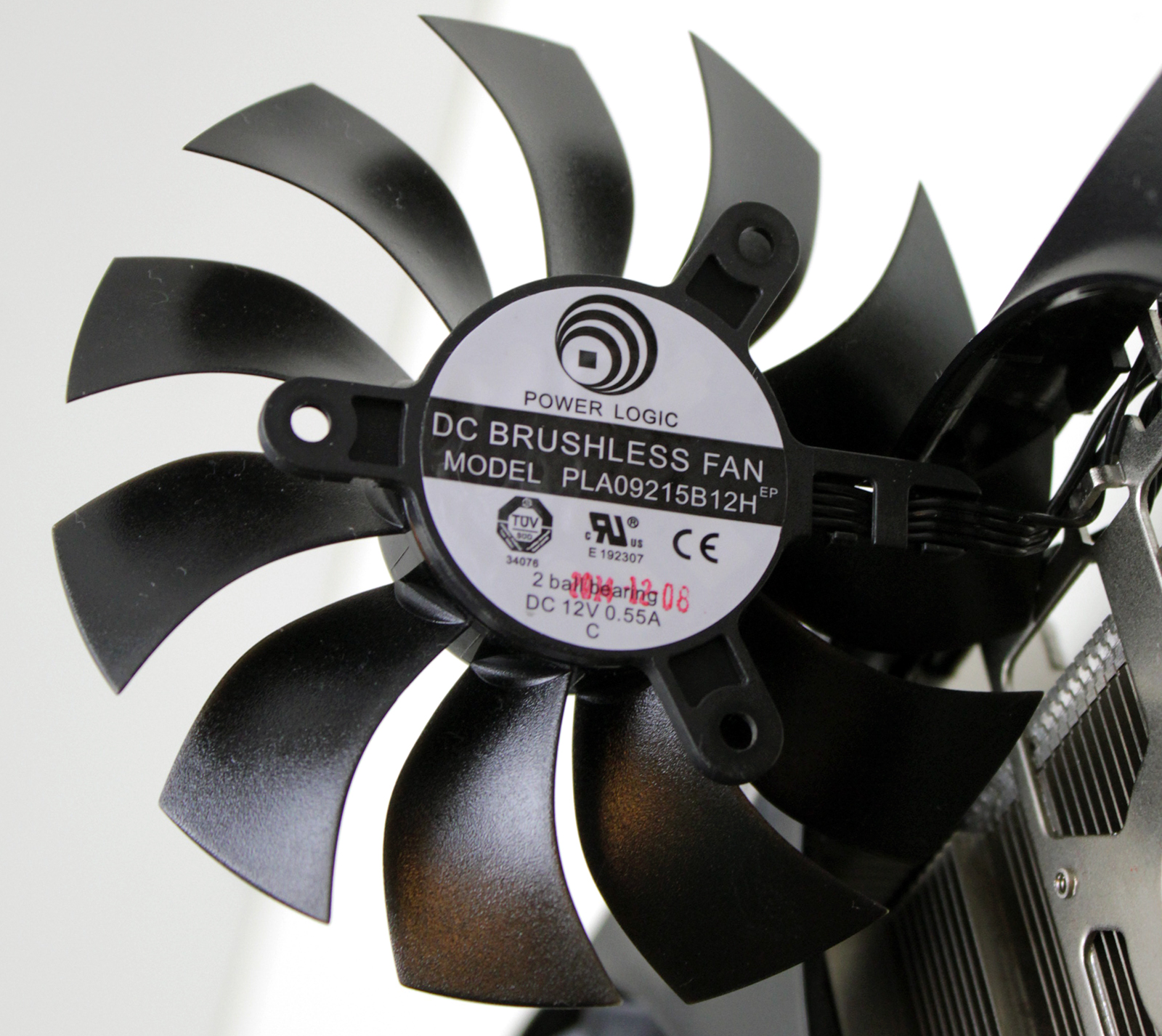
The company even made some promotional materials about the new design.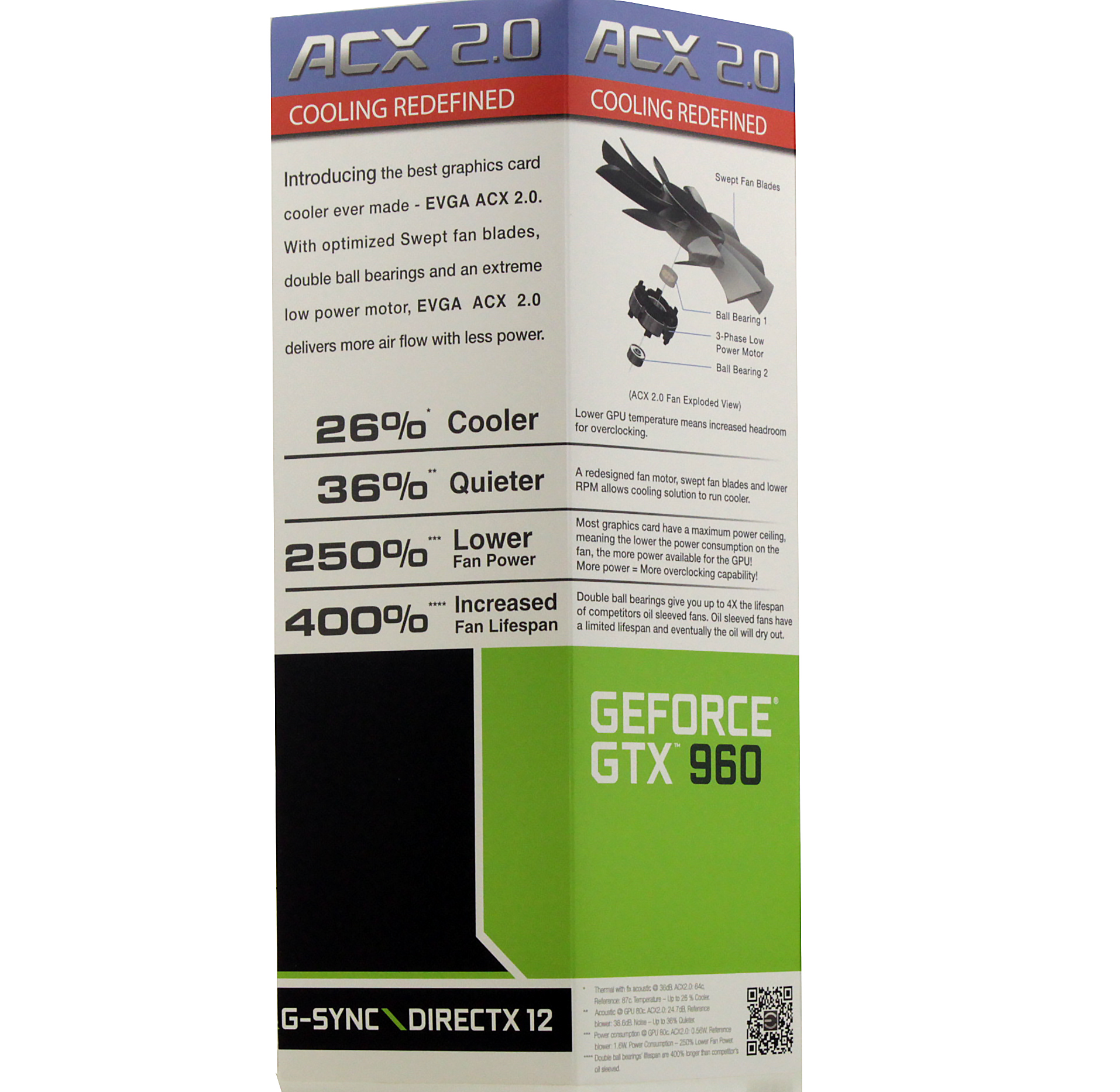
The GTX 960 SuperSC is built for standard dual-SLI, as it features just one SLI connector. The fact that this is a dual-slot design also helps.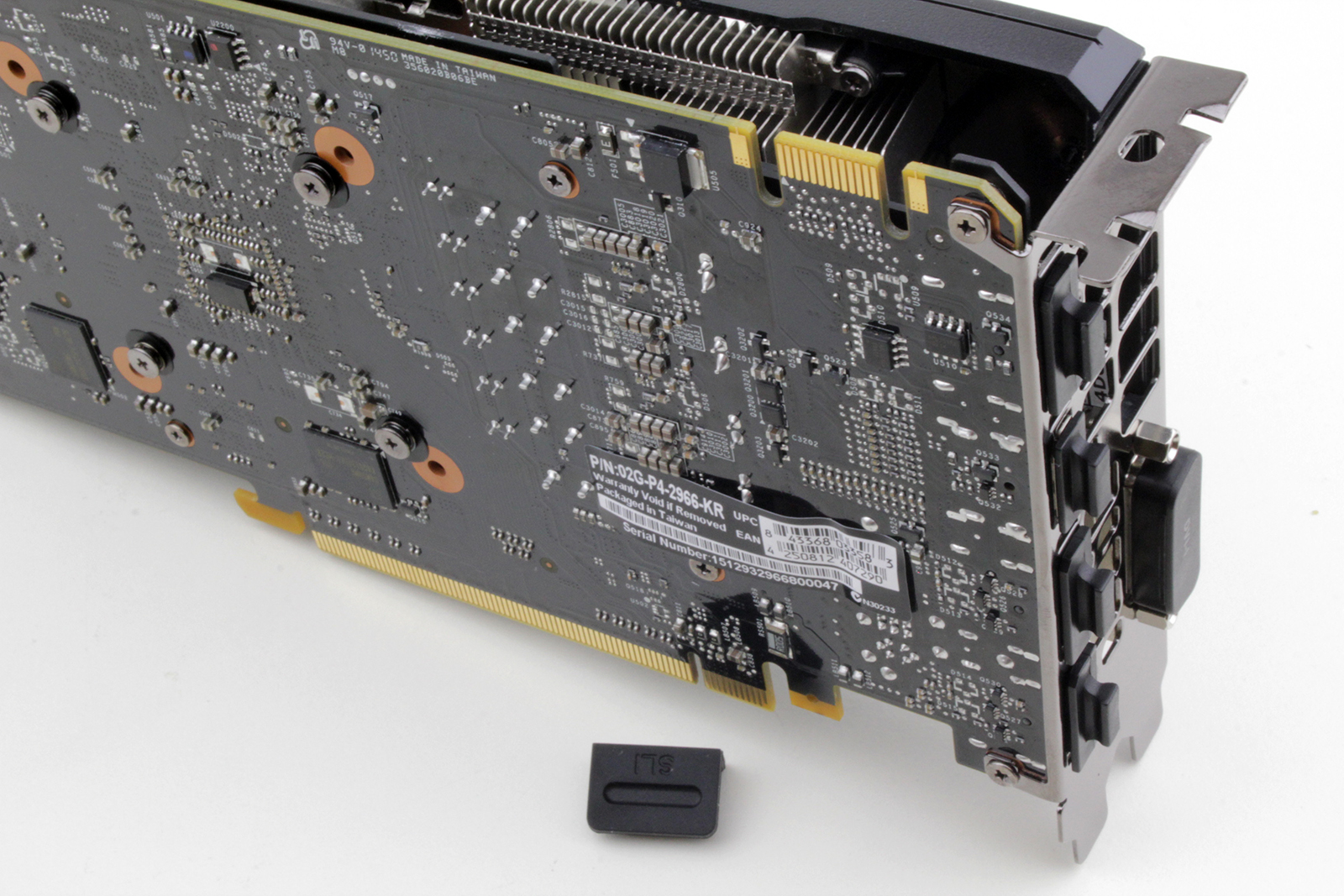
The GTX 960 SuperSC ACX 2.0+ features one standard HDMI connector (2.0 compatible, which includes HD audio and Blu-ray 3D movies support), one dual-link DVI, and three DisplayPort outs. GM206 features support for H.265 (HEVC) encoding and decoding. Four video outs can be used at the same time, just like on the reference GTX 960 card (the reference card provides the same mix of video connectors). Protective caps are on all video out connectors.
The I/O bracket also doubles as an exhaust vent, helping reduce temperatures in the chassis.
The exhaust vent is much more important on the reference cooler which uses a blower style fan (image below).
The GTX 960 SuperSC ACX 2.0+ has 2GB of memory, and two of four memory modules are placed on the back side of the PCB. 
The Samsung chips, (modelK4G41325FC-HC28 which is also used on the GTX 970 SSC) are specified to run at 1750 MHz (7000 MHz GDDR5 effective).
A full-size cooling plate makes direct contact with the memory chips and MOSFETS, reducing memory temperatures by up to 9°C and MOSFETs up to 11°C. 
EVGA designed Straight Heat Pipes (SHP) to reduce the GPU temperature by an additional 5°C. Acording to EVGA internal testing, the triple 8mm straight heat pipes offer 6% better heat dissipation than bent heat pipes with reduced thermal resistance. A big copper base covers the relatively small GM206 GPU.
GTX 960 SuperSC has one 8-pin power connector and a 6+2 power phase design.

